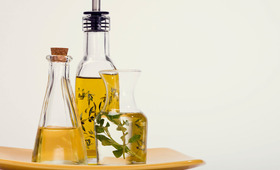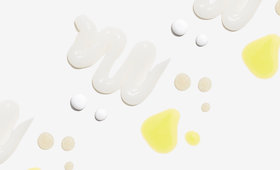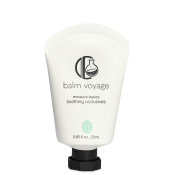Moisturizing may seem like one of the most basic parts of skincare, but it can get surprisingly complicated. Just when you think you’ve finally nailed down your holy grail moisturizer, the season (or your skin!) changes and you’re back to square one. Luckily, understanding the science behind moisturizers can help you determine exactly what your skin needs (and what it doesn’t). We talked to Gloria Lu and Victoria Fu—the cosmetic chemist duo behind Chemist Confessions—to get the lowdown on moisturization so you’re never left high and dry.

Moisturizers are made up of three components
It turns out that moisturizers are made up of three types of ingredients: humectants, emollients, and occlusives.
-
Humectants (or “water grabbers,” as Gloria and Victoria call them) attract and bind moisture to the surface of the skin. Some common examples are glycerin and hyaluronic acid.
-
Emollients contain lipids (fats) that soften and smooth the skin while sealing in moisture—think facial oils.
-
Occlusives are heavy-duty sealants that keep your skin from losing moisture, like petrolatum (aka Vaseline), shea butter, and beeswax.
When you pick up a bottle of moisturizer, it will usually contain a blend of these three types of ingredients. Lightweight moisturizers tend to include mostly humectants with a small amount of emollients and occlusives, while a super-rich night cream might contain more occlusives to really seal in hydration. If you’re having trouble with moisturizing, it’s helpful to know about these types of ingredients so that you can customize your routine.
How to moisturize, according to science
Everyone needs a balance of humectants, emollients, and occlusives to keep their skin happy. However, the exact balance of the ingredients depends on your skin. Here’s a general guide by skin type to get you started:
Oily Skin
Oily skin needs moisture too! Look for a moisturizer with a lot of humectants and just a few emollients and occlusives to avoid a heavy, greasy feel. Try applying humectant-rich, water-based toners, essences, and serums and then sealing them in a few drops of facial oil. If dry patches are an issue, Gloria and Victoria recommend dabbing an occlusive, like Balm Voyage, on the flaky spots. “If you’re antsy about using something so heavy-duty,” they say. “Consider an emollient, like The Better Oil, first for just a bit of a boost without occlusives.”
Acne-Prone Skin
If you’re prone to acne, blackheads, and breakouts, moisturizing can be especially tricky—no matter if your skin is oily, dry, or somewhere in between. You still need a good balance of humectants, emollients, and occlusives, but look for ones that are none to be non-comedogenic. Petrolatum is a great example of an occlusive ingredient that seals in moisture but is not likely to clog pores (although everyone’s skin is different—always patch test!)
Normal/Combination Skin
You also need a balance of humectants, emollients, and occlusives, but you can play with the ratio depending on your skin’s needs. Maybe you’re on a tropical vacation in a humid climate and your skin is suddenly much more oily than normal. “Time to dial back any emollient or occlusive components in your regimen!” recommend Victoria and Gloria. “Try a completely oil-free, humectant-based product like Aquafix alone.”
Dry
Make sure your moisturizing routine checks off all three boxes. If your skin is feeling dry, you may be lacking in one of the three groups. For example, if your go-to cream isn’t cutting it during winter, Gloria and Victoria point out that “your skin may need help with holding water, too. Layering a humectant-heavy, hydrating serum like Aquafix under your moisturizer could be the difference-maker!”

The final word on moisturizing
If you ask the Chemist Confessions team, the goal is to become the master of your moisturizing routine. “Trust us, there aren’t that many new magical moisturizer ingredients brewing out there. It’s just about finding the balance,” say Gloria and Victoria. It’s easy to make tweaks depending on your skin’s needs if you have an arsenal of humectant, emollient, and occlusive products that you can dial up or down.
Start building your moisturizing routine with science-backed skincare from Chemist Confessions.
Featured Products
You Might Also Like
-

Skincare
Should Your Skin Be That Red?
- 70
-

Expert Skin Care Advice
Beauty Myth: Does Your Skin Purge Impurities?
- 52
-

Toners & Mists
Should You Use a Toner?
- 174
-

Expert Skin Care Advice
What Does Nano Skin Care Really Mean?
- 19
-

Expert Skin Care Advice
Best Oils For Your Body
- 238
-

Expert Skin Care Advice
How to Moisturize Properly, According to Science
- 10











